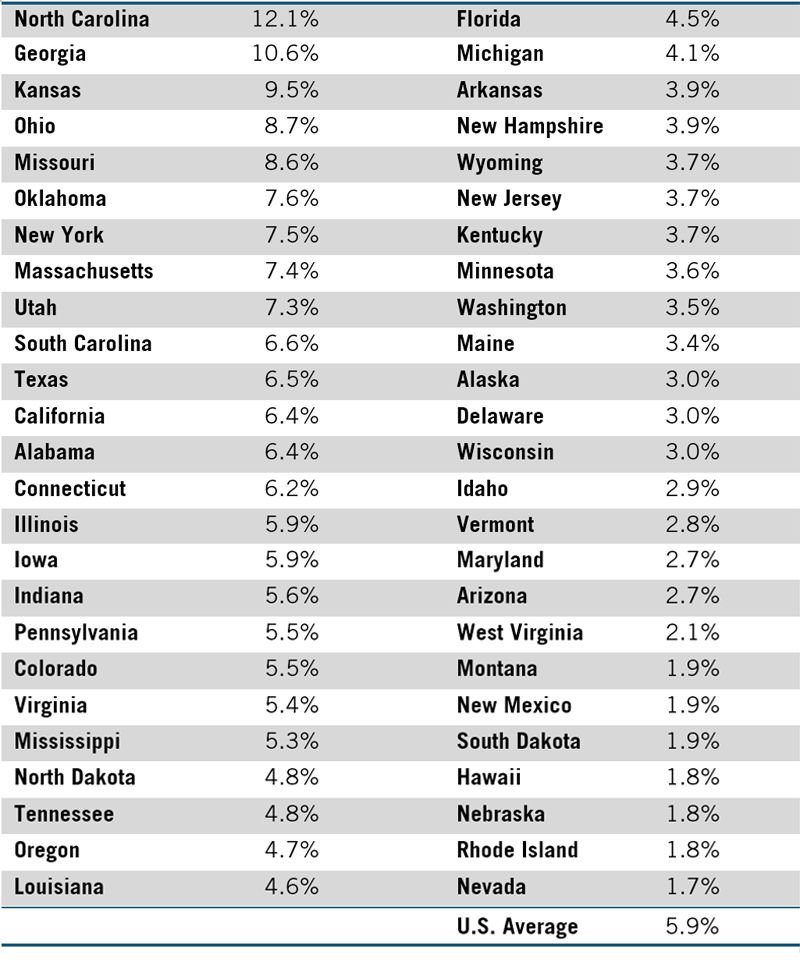Industry Funding of University Research: Which States Lead?
All states, but especially the laggards, would benefit from policies to attract more industry research funding, particularly as such funding appears to generate technology-based economic activity.
Industry funding of university research is an important component of U.S. academic research and industrial innovation, especially as federal funding for universities continues to decline and companies cut back on basic, intramural research. However, U.S. states vary dramatically on the extent to which their research universities attract industry support. In part, this is because of policy and administrative choices states and universities make. All states, but especially the laggards, would benefit from policies to attract more industry research funding, particularly as such funding appears to generate technology-based economic activity at the state level.
Before WWII, industry funded a significant share of university R&D. However, as federal research funding increased dramatically during and after the war, industry’s share fell, to just around 3 percent in the 1970s. That percentage started to rise again in the late 1970s and early 1980s, in part due to the growth of more science-based industries, including information technology (IT) and biopharmaceuticals, but also because of federal and state policy changes. For example, the Bayh Dole Act in 1980 gave universities rights to intellectual property generated from federal funding, which spurred many universities to work more with industry. Separately, the National Science Foundation during the Reagan administration developed new industry partnership programs like the Engineering Research Center program, while many state governments developed university-industry research centers to grow technology-oriented businesses. Both of these types of initiatives spurred industry funding. As a result, the share of university research funded by industry increased from 4.9 percent in 1980 to a high of 7.4 percent in 1999. The share has fallen since then, even as federal funds have dropped overall. In 2016, industry funded just 5.9 percent of U.S. academic research.
This share varies considerably between states, however, from a high of 12.1 percent in North Carolina to just 1.7 percent in Nevada. The five leading states are North Carolina, Georgia, Kansas, Ohio, and Missouri. Leading states generally have strong research universities and at least a moderately robust advanced-industry economy with firms that benefit from more industrially relevant university research. In addition, many of the leading states, such as Georgia, North Carolina, Ohio, and Utah have long had robust state-supported technology-commercialization programs, such as the Georgia Research Alliance, which try to link industry and university research.
The states where industry contributes less than 2 percent of all research funding are Nevada, Rhode Island, Nebraska, Hawaii, South Dakota, New Mexico, and Montana. Lagging states generally have lower-ranked, less-well-funded research universities and fewer technology-based firms.
Share of University Research Supported by Industry

Editors’ Recommendations
December 19, 2017
How States Can Succeed in the Data Economy
November 28, 2017
How Technology-Based Start-Ups Support U.S. Economic Growth
November 6, 2017

